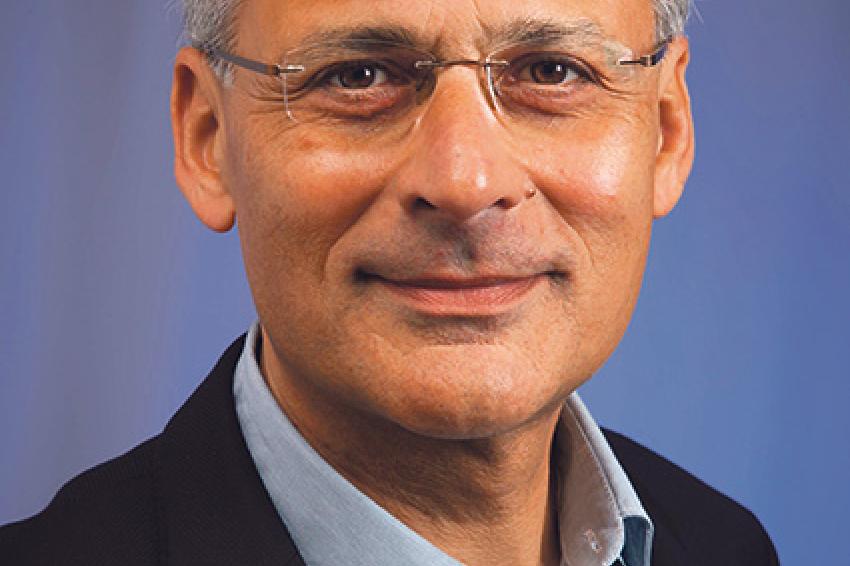Brazil is Still to Score
A Growing Chemical Market Driven By Increasing Population, Urbanization and an Expanding Middle Class
The Right Dynamics -With a gross domestic product (GDP) of $2.2 trillion in 2013, the World Bank ranks Brazil as the world's seventh largest economy and one of the two economic powerhouses alongside Mexico in the region. Yet it has experienced a slowdown: in comparison to a GDP growth rate of 7.5% in 2010, the Brazilian economy slowed down significantly to 0.9% in 2012, the lowest of the BRICs.
This year Brazil hosts the 20th FIFA World Cup and in 2016 it will host the Summer Olympic Games. These global events were to stimulate the country's economic development - improving infrastructure, creating jobs and promoting Brazil's global image. Much of the planned investment, particularly foreign direct investments, has not occurred. Despite a fiscal stimulus in advance of October's election, GDP growth is only likely to be 2.4% this year: according to the Institute of International Finance, lackluster growth has become the norm rather than the exception.
A Growing Middle Class
A key driver of future growth and the advancement of the country's level of prosperity will be Brazil's growing middle class and its growing demand for consumer oriented goods and services. Brazil's total population is expected to grow to 233 million by 2030, a more than 20% increase from 2011 to 2030. The consumption per head is expected to increase by over 50% from 2011 to $6,300 by 2030. The South-East of the country which has 42% of the population, currently accounts for 55% of the GDP, whereas the northeast of Brazil with 28% of the inhabitants only generates 13.5% of GDP. It is expected that new growth regions will open up in the historically under-developed northeast.
Can Production Meet Demand?
Production output will follow demand impacting favorably such sectors as the construction, agriculture, consumer goods and automotive. The construction industry represents approximately 20% of industrial output in Brazil and recorded a CAGR of 13.2% from 2008 to 2012. From 2013 to 2017, a CAGR of 8.7% is expected. Another large sector, automotive, accounts for 5.5% of the country's GDP and 23% of the manufacturing output. In 2013, the automotive sector witnessed a production growth of 9.9% with growth expected to continue. The Chemical industry contributes approximately 3% of the country's total GDP and is expected to grow from a market value of $120 billion in 2013 to $160 billion in 2017, an overall CAGR of 8.3%. Although the industry with its 4500 chemical companies is well challenged to meet the increased demand, growth will nonetheless be hindered due to the expensive raw materials, lack of infrastructure, and the complexity of the legal and regulatory regime. Based on the 2014 World Bank's 'Ease of Doing Business' ranking, Brazil was ranked 116th, behind Mexico (53rd) and China (96th). For the country to grow, the government must work alongside the private sector to overcome these challenges.
The largest local chemical player in Brazil as well as in Latin America (8th worldwide) is Braskem with €18 billion sales in 2013. Major global foreign companies such as BASF, Bayer, Dow Chemicals, Solvay/Rhodia, Lanxess, and M&G Chemicals have plants in Brazil.
A Mounting Trade Deficit with No End in Sight
Although Brazil has raw materials, it is a net importer of chemicals with a record $32 billion negative trade balance in 2013. Brazil produces a limited amount of high-end specialty chemicals, less than 15% of the market value. Higher margin derivatives must be imported to meet Brazil's demand for specialty chemicals products. In 2012, commodity chemicals accounted for over 63% of the total market value of €117.5 billion with thermoplastic resins being the major export item. In light of the current growth impediments, the chemical industry trade deficit is expected to continue growing in 2014. To avoid losing further credibility as a location of choice for investment, Brazil needs to improve its infrastructure, loosen protectionist measures and streamline its administrative process.
Until it does so, the level of investment in Brazil will remain small scale. For example, although BASF plans in 2014 to invest in an acrylic acid, butyl acrylate and superabsorbents plant in Camacari for €500 million, BASF's planned capital expenditures from 2014 to 2018 for the South America, Africa and the Middle East region only accounts for 4% of its total investment funds. This 4% level pales in comparison to the 18% BASF is earmarking for the Asia Pacific region.
Brazil also faces stiff competition from the US, as result of the shale gas boom. To access competitive feedstock, local majors are investing abroad. For example, even Braskem has made some significant investments abroad including an Ethylene XXI JV project with Pemex in Mexico as well as the Appalachian project in West Virginia, US. The Appalachian project includes an ethane cracker, three polyethylene plants and associated infrastructure for water treatment and energy co-generation.
Feedstock Challenges
Expensive Naptha-based crackers: The majority of the crackers in Brazil are primarily naphtha based, with only two capable of using restricted amounts of ethane and propane. The country also has one ethanol-to-ethylene dehydration plant. Despite having the diverse feedstock base, the country is facing cost challenges. While the industry giants are hungry for cost-advantaged feedstock, the shale gas in the north-eastern region and the pre-salt oil & natural gas discoveries have renewed hopes for the industry.
Moving Ahead With Natural Gas and Shale: The country ranks 10th in proven recoverable shale gas reserves with approximately 250 trillion cubic feet (tcf). Despite environmental pressures, Brazil's National Petroleum Agency (ANP) awarded 72 onshore natural gas and shale gas blocks, in December 2013. The outlook of this development is viewed with skepticism as the infrastructure related to pipelines and transportation that supported the US's shale gas success story is lacking in Brazil.
A Sign of Relief with Pre-Salt: The world's largest oil discoveries in recent years have come from Brazil's offshore, pre-salt basins; with total estimated recoverable oil & natural gas reserves standing at over 50 billion barrels of oil equivalent. Brazil's oil & gas giant, Petrobras, plans to invest $73 billion in pre-salt exploration and production activities from 2013 to 2017. The pre-salt development has renewed the hopes of the domestic chemical industry. Furthermore, Petrobras has agreed to supply cheap ethane from the pre-salt reserves to Braskem's cracker at its proposed site, Complexo Petroquímico do Rio de Janeiro (Comperj).
Largest Reserves of Biomass: Brazil has the largest reserves of biomass in terms of sugarcane; the country produced 589,000 tons of sugar cane during the 2012-2013 harvest season. ABIQUIM (Chemical Industry Association of Brazil) envisions that by 2020, 20% to 25% of chemical products will be derived from sugar-cane based feedstock. Moreover, the country ranks second (after the US) in terms of ethanol output and controls approximately 27% of the global fuel ethanol production. Bio-based chemicals technology is at an early stage and domestic and foreign companies are committed to develop the technology.
Since 2010, Braskem has been operating the world's first sugarcane ethanol polyethylene plant with an annual capacity of 200,000 tons in Brazil. Braskem also has other renewable feedstock-based projects in the pipeline including a 30,000-50,000 t/a bio-based polypropylene plant and development of bio-butadiene technology with Genomatica. Among foreign players, Lanxess operates a 10,000-t/y bio-based EPDM (ethylene propylene-diene) rubber plant in Brazil.
Government Moves Needed to Support Investment
The 'Growth Acceleration Program II' launched in 2010, has been riddled with delays. The program highlighted total investments of $872 billion from 2011 to 2014, including $526 billion in the areas of logistics, energy and social development. Overall, Brazil is lagging behind its Latin American neighbors in terms of fixed investment.
Shortcomings persist and the lack of infrastructure, particularly transportation roadways, remains a key concern for the industry. Transportation is largely based on trucks, making it hard and very expensive to move goods nationally given the long distances to cover. New trucking legislation has also increased delivery time and costs.
The customs clearance process is bureaucratic and costly with import taxes on some materials (to protect domestic producers). The extent and complexity of the tax system in Brazil is also onerous. The government, under pressure, has offered industry tax incentives in the areas of R&D, employment and production of raw materials. Special incentives also exist for infrastructure development of the chemical industry in the north, north-east and central-west regions (REPENEC) and for the fertilizer industry (REIF) until 2017.
The cost of money is high. Historically, Government's interest rate policy was historically set at low levels with a record low rate of 7.5% in 2012. However, high inflation eventually pressured Brazil's central bank to set higher rates to help regulate inflation.
Growth Remains Fragile
Brazil is a land of opportunity with the right dynamics - a growing market for the chemical industry driven by increasing population, urbanization and an expanding middle class. However, until Brazil comes to grip with its challenges and the government improves its policies and programs, the majority of investment will continue to flow elsewhere.
Contact
KPMG AG Wirtschaftsprüfungsges.
Tersteegenstr. 19 -31
40474 Düsseldorf
Germany











